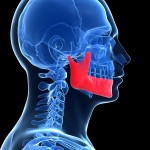
Temporomandibular disorders (TMDs) are a broad group of musculoskeletal problems affecting the temporomandibular joint (TMJ) muscles and support structures resulting in pain and limitation of movement. Most patients respond to treatment with non-surgical approaches with more invasive procedures such as arthrocentesis and arthroscopic lavage or surgery being reserved for non-responders.
The aim of this review was to compare the efficacy of TMJ lavage compared with nonsurgical intervention for the management of TMDs.
Methods
Searches were conducted in the MEDLINE, Embase, CENTRAL (Cochrane Central Register of Controlled Trials), Scopus, Web of Science and International Clinical Trials Registry Platform (ICTRP) databases. Randomised controlled trials (RCTs) comparing TMJ lavage with needles (arthrocentesis) alone or with an arthroscope with nonsurgical treatment for TMJ pain were considered. The primary outcome was pain reduction secondary outcomes included jaw function based on mouth opening, improvement in chewing ability, improvement in quality of life, or adverse effects. Two reviewers selected studies for inclusion and key data items extracted. Risk of bias was assessed using the Cochrane risk of bias tool. Meta-analysis was conducted using a fixed effects model.
Results
- 5 RCTs involving a total of 308 patients were included.
- 3 studies were at high risk of bias, 2 at low risk.
- The pooled standardized mean difference (SMD) for the reduction of pain between intervention and control showed a significant advantage for lavage at 3 and 6 months but not at 1 month.
- 3 months; SMD = –0.47 (95%CI, –0.75 to –0.19); P = .001; I2 = 85%)
- 6 months; SMD = –0.63 (95%CI, –0.90 to –0.37); P < .00001; I2 = 88%)
- The pooled standardized mean difference for maximum mouth opening showed no difference between groups at 1,3 or 6 months.
Conclusions
The authors concluded
Given the relatively small number of patients included in this meta-analysis, the high risk of bias in 3 studies, and the statistical and clinical heterogeneity of the included studies, the use of TMJ lavage for the treatment of temporomandibular disorders should be recommended with caution because of the lack of strong evidence to support its use.
Comments
The review has searched a good selection of databases to identify relevant studies and provides a detailed narrative summary of the included studies. However, as the authors note the quality of the available studies is low so the findings should be interpreted with caution. A review by Al-Moraissi et al in 2104 (Dental Elf – 10th Sep 2014) compared arthroscopy and arthrocentesis for the management of TMDs including 6 RCTs suggesting that arthroscopy lysis and lavage was superior. Although again there were only a limited number of small low quality studies. The 2011 Cochrane review by Guo et al (Dental Elf – 2nd Aug 2011) considered that there was insufficient consistence evidence to support or refute use of arthrocentesis for TMDs.
Links
Primary paper
Bouchard C, Goulet JP, El-Ouazzani M, Turgeon AF. Temporomandibular Lavage Versus Nonsurgical Treatments for Temporomandibular Disorders: A Systematic Review and Meta-Analysis. J Oral Maxillofac Surg. 2017 Jan 4. pii:S0278-2391(16)31315-5. doi: 10.1016/j.joms.2016.12.027. [Epub ahead of print] Review. PubMed PMID: 28132759.
Other references
Dental Elf – 10th Sep 2014
Temporomandibular arthoscopy may be better than arthrocentesis for temporomandibular joint disorder
Dental Elf – 2nd Aug 2011
